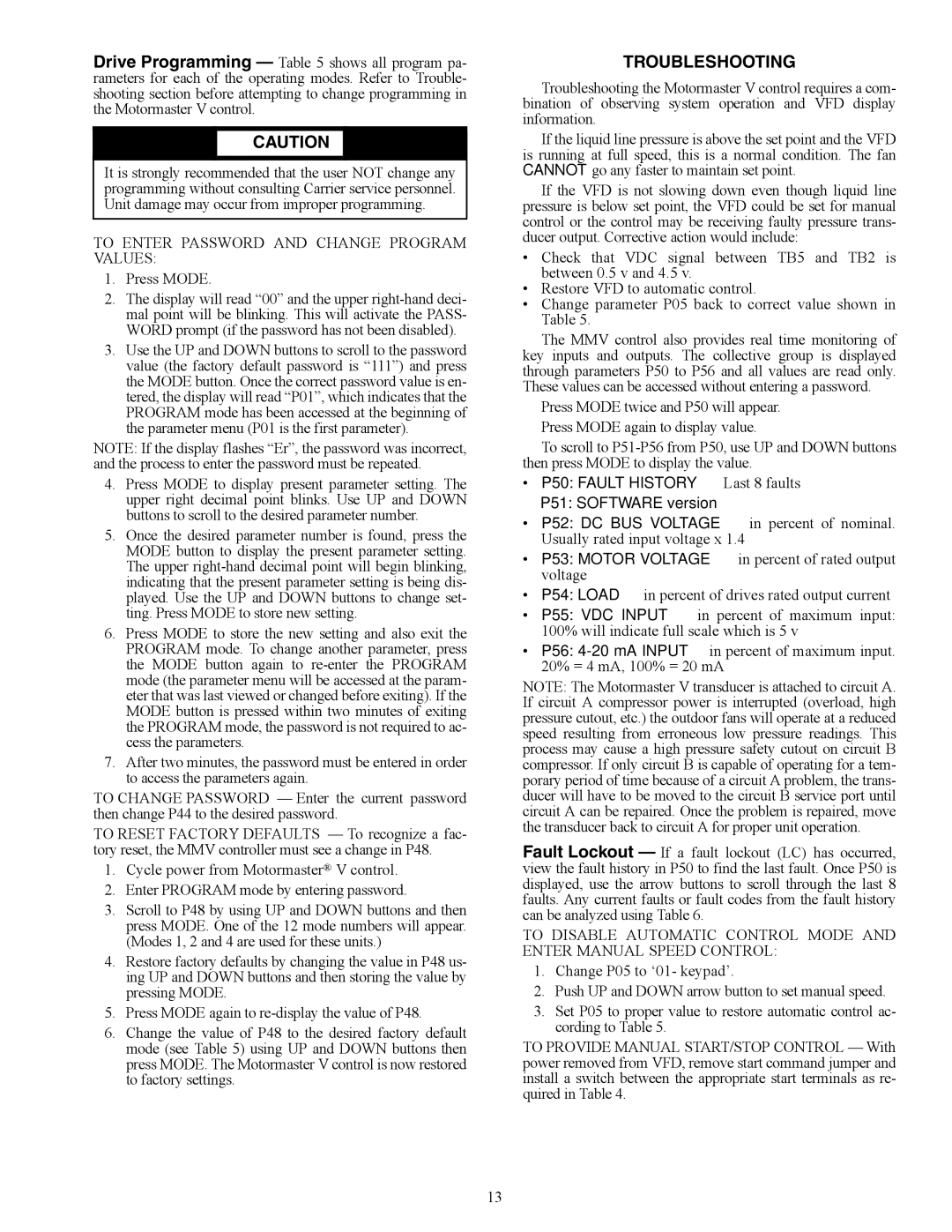48/50P5030-100, 48/50P3, 48/50P2, 48/50P4 specifications
The Carrier 48/50P5030-100, 48/50P4, 48/50P3, and 48/50P2 series represent a range of highly efficient air conditioning and heating solutions developed by Carrier. Designed for commercial and industrial applications, these units combine advanced technology with robust features to deliver reliable performance and comfort.One of the standout features of the Carrier 48/50P series is their energy efficiency. These units are equipped with high-efficiency compressors and fans that optimize energy use while maintaining superior cooling and heating capabilities. The models often meet or exceed ASHRAE efficiency standards, providing significant energy savings over traditional systems. This makes them not only cost-effective over their lifespan but also a responsible choice for energy-conscious businesses.
The 48/50P5030-100 model is notable for its ability to deliver precise temperature control, thanks to its sophisticated microprocessor control panel. This control system allows for easy adjustments and provides valuable diagnostic information, ensuring operational reliability and maintenance efficiency. The advanced controls also support variable-speed technology, which adjusts the system’s output based on real-time demands, enhancing both comfort and energy savings.
In terms of construction, these units are designed for durability. With a rugged, weather-resistant cabinet and high-quality components, they can withstand harsh environmental conditions, making them suitable for a variety of settings. The units typically include high-efficiency filters that improve indoor air quality by reducing airborne particles and allergens.
Another key characteristic of the Carrier 48/50P series is their versatility. These units can be configured for various applications, including rooftop installations and ground-mounted setups. Their modular design allows for easy integration into existing systems, accommodating different space requirements while providing optimal performance.
Carrier also emphasizes noise reduction in the design of these units, incorporating sound-dampening technologies that minimize operational noise. This is particularly valuable in environments where quiet operation is essential, such as schools and offices.
Overall, the Carrier 48/50P5030-100, 48/50P4, 48/50P3, and 48/50P2 series represent a commitment to quality, efficiency, and innovation in climate control solutions. With their advanced features, energy-saving technologies, and robust design, these models are well-suited to meet the diverse needs of modern commercial and industrial facilities. Carrier continues to lead the industry by integrating cutting-edge technology with a focus on performance and sustainability, ensuring that their systems provide long-term comfort and efficiency.

